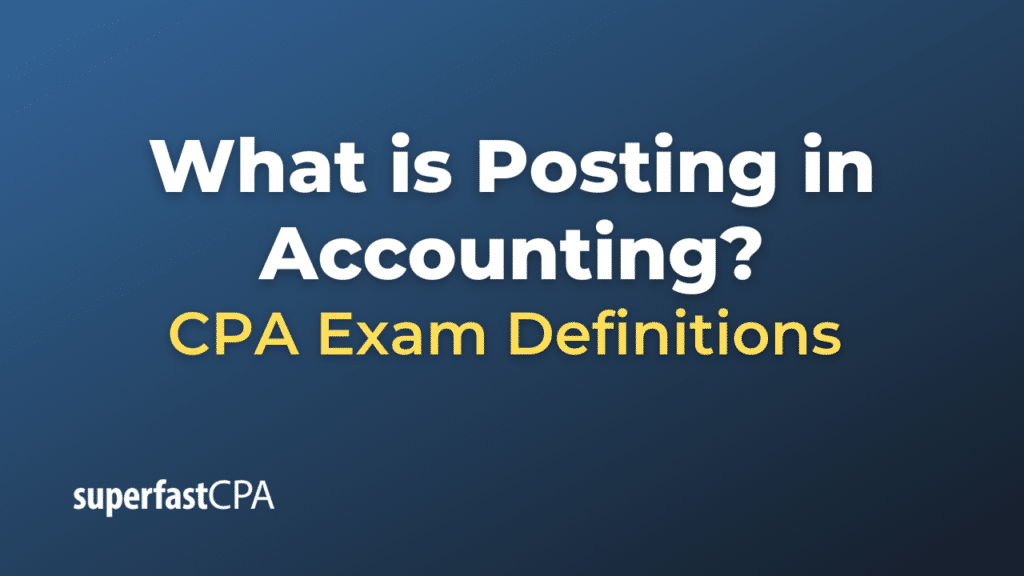Posting in Accounting
In accounting, posting refers to the process of transferring entries from a journal of original entry into a ledger book. The purpose of this is to group all transactions related to a certain account in one place. The process ensures that all transactions are accounted for and makes it easier to see the overall status of an account at a glance.
Each transaction in a journal is posted to two or more ledger accounts as per the double-entry bookkeeping system, which states that each transaction involves at least two accounts. One account will get a debit entry, while another will get a corresponding credit entry. The process of posting ensures that the total debits equal the total credits, which keeps the accounting equation (Assets = Liabilities + Equity) in balance.
In the era of manual record-keeping, posting was a separate step done after recording the transaction in the journal. In today’s digital age with computerized accounting systems, the posting process often happens simultaneously with the recording of the transaction.
Example of Posting in Accounting
Let’s take a simple transaction as an example.
Suppose your business purchases a new computer for $1,000 cash. This transaction impacts two accounts: “Computer Equipment” (an asset account) and “Cash” (also an asset account).
First, you would record the transaction in your journal. It might look like this:
- Date: July 29, 2023
- Account: Computer Equipment
- Debit: $1,000
- Credit:
- Description: Purchased new computer
- Date: July 29, 2023
- Account: Cash
- Debit:
- Credit: $1,000
- Description: Purchased new computer
After you’ve made these journal entries, you then post them to the appropriate ledger accounts.
- In the “Computer Equipment” ledger, you add a debit entry for $1,000, increasing the balance of this account.
- In the “Cash” ledger, you add a credit entry for $1,000, decreasing the balance of this account.
This ensures that your total debits and credits are equal (in this case, $1,000 debit to Computer Equipment equals $1,000 credit to Cash), and your accounting equation remains in balance.
This is a simple example. In actual business operations, there could be hundreds or even thousands of transactions each day, making the posting process critical for maintaining accurate financial records.













